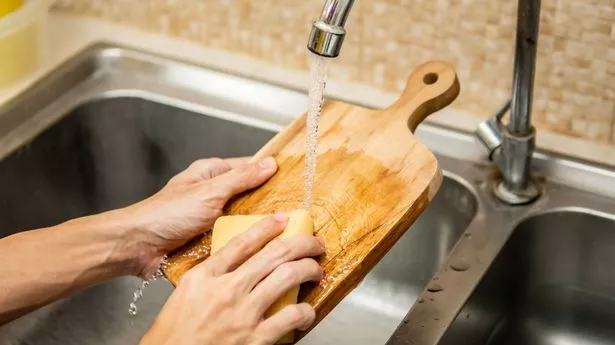Experts have issued a warning that everyday household items could be making you ill due to bacterial infestation.
Items such as sponges and chopping boards may appear clean, but the reality could be quite different. Cleaning content creator on TikTok, Danielle Mason, also known as a 'cleanfluencer', has revealed a list of appliances that could be teeming with germs.
A simple and cost-effective method is to create your own disinfectant. Simply fill half a spray bottle with rubbing alcohol, add 25ml of white vinegar, and 25 drops of your favourite essential oils. Below, we provide a comprehensive list of common household items that could be harbouring germs.
Kitchens, door handles and buttons
Kitchens, door handles, and buttons are often overlooked during kitchen cleaning, says Danielle.
"Most people don't realise their importance, but considering they frequently come into contact with raw food and meat, it's crucial to keep these areas clean to prevent cross-contamination. Always sanitise with a cloth," she advises.
Cloths
Cloths, which are used to maintain cleanliness in the kitchen, could ironically be spreading bacteria everywhere. Danielle said: "I always soak my cloths in bleach before going to bed each night. Also, make sure you're replacing the clothes – I would suggest a new one every two weeks, whilst still bleaching every night.
"And make sure you're not using this cloth on anything other than the kitchen, as you do not want to cross-contaminate.
Sponges
People tend not to use sponges, as they carry so many more germs, and even putting them in the microwave will not kill all of them. Avoid a sponge where possible.
Chopping boards
"You should have one for every day of the week, as they carry so many bacteria and germs, which get spread across the kitchen," she says. "You should have a different colour for different types of food, one for meat, fruit, and other foods.
"The best way to clean them is in a dishwasher, as it's good to get rid of all the germs due to the very high heat. If you don't like the dishwasher, then boil the kettle water and leave the chopping boards to soak in it." It is best to avoid wooden chopping boards altogether, as these cleaning methods may damage them.
Kitchen sink
Mason warns that the kitchen sink is a hotbed for germs and grime, harbouring a unique microbiome. "The plumbing area found beneath sinks revealed microbial communities dominated by a group of bacteria called Proteobacteria. This phylum includes pathogens such as Salmonella and E. coli, which can cause serious disease," Mason explains.
He advises against cross-contamination, especially with items from outside the kitchen: "Nothing from outside the kitchen should cross-contaminate [the sink]. For example, never wash your floors and put dirty water in your kitchen sink, always throw it down the toilet."
When it comes to cleaning sinks and drains, Mason recommends natural solutions or caution with harsher chemicals: "Baking soda and vinegar is the best way to clean your sink out, or bleach, but you must be careful with bleach, as it can stay in the bottom of your sink, depending on the material it's made of."
To keep pests at bay, he suggests sealing any gaps: "You can prevent mice and rodents from entering the kitchen by covering any small crevices or cracks," he adds.
Fridges
On fridge maintenance, Mason believes in regular deep-cleans every two months and daily upkeep: "A normal cleaning – the wiping of shelves – should be done every other day with soapy water. For any bad smells, use baking soda, which will absorb the smell from the fridge," he continues.
Mason's insights could be the key to maintaining a cleaner, healthier home environment.
